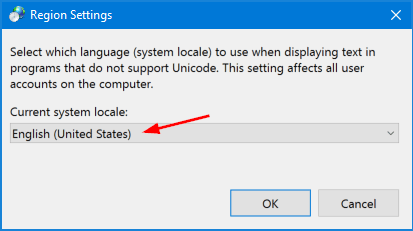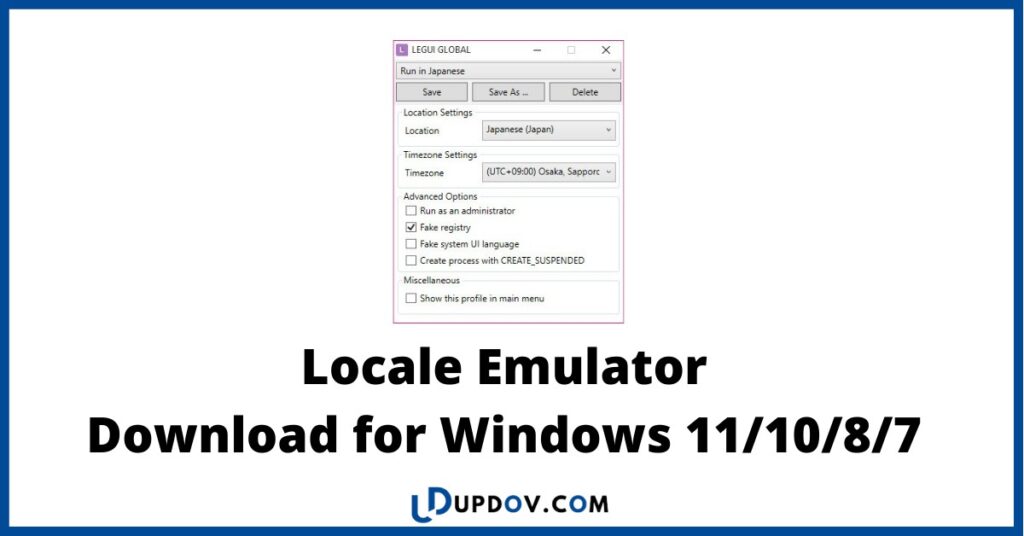

- System locale emulator windows 10 install#
- System locale emulator windows 10 upgrade#
- System locale emulator windows 10 windows 10#
- System locale emulator windows 10 software#
Skip to the second option here on changing the system locale.
System locale emulator windows 10 install#

If Chinese won't display in applications, files, or filenames:

If you need help finding this, contact me anytime. Most other browsers offer the same options as well. In Safari, the last time I looked, at the top right I clicked the little page icon and in the menu there was "Text Encoding". «Sigh.» But at least when you're on Microsoft websites the account settings (gear) icon at the upper right of the web page includes language localization options.
System locale emulator windows 10 windows 10#
In Windows 10 the IE "Language" button only sends you to the system control panel to add more languages - not helpful - and I can't find language settings anywhere in the initial release of the Microsoft Edge browser. In the Windows 8 tablet version of IE, the gear menu takes you to Settings > General > Display for an even more dumbed-down and less useful list, and I can't remember what happened in Windows 8 desktop. In IE 9, 10 and 11 on Windows 7 and earlier, the only way to change this seems to be via the tools (gear) menu > Internet Options > General tab > "Language" button, which is really inconvenient and not exactly what we want but at least it's there. In Internet Explorer 6, it was under View > Encoding. In previous versions it was on the classic menu at the upper left, under View or Web Developer > Character Encoding. In Firefox, encoding choices are now on the toolbar menu (the three-line "hamburger" icon on the right), under Text Encoding. In Chrome, go to the menu, select More tools > Encoding, and try Chinese encodings specific to the region where the site is based. You don't really need to know about the details of this stuff just to surf the Web, but if you are curious I've written an article about fonts and character sets in Chinese web pages, and for even more bedtime reading there's my summary of Chinese encoding standards. UTF-8 is a form of the universal Unicode encoding, and my browser had already selected this automatically based on Baidu's HTML header. You shouldn't need to do this for the screen shot above is just an example. In recent versions of Windows, Chinese characters are already enabled.) (If you're using Windows XP, make sure you have enabled East Asian languages. If a Chinese website is still not correctly displaying Chinese characters, you can usually fix this by manually adjusting your browser's character encoding setting. Let's discuss this easy fix, before moving on to more complicated problems. Most problems like these can be fixed with the solutions I describe below. I also get the same question from people who see Chinese on some but not all Chinese websites.
System locale emulator windows 10 software#
I have received this question regarding applications (like Sina UC, shown above), Chinese MP3 filenames, software from Taiwan and the mainland, even US versions of QuickBooks that used to accept Chinese characters in text fields until the user upgraded or moved to a new system.
System locale emulator windows 10 upgrade#
If you see Chinese on some web pages but not all, or if Chinese in some but not all applications looks like the dialog box above, don't worry! You do not need to upgrade Windows. No Language Packs or MUI bundles are necessary for this. Do I need a Language Pack? Help!!!Ĭhinese should display automatically in recent versions of Windows, or after you have enabled East Asian languages in Windows XP.

The Chinese characters in one of my programs, some of my filenames, and on some web pages are showing up as "?", boxes and other garbage characters. FAQ: Chinese will not display in Windows application, filename, or web page :: Pinyin Joe


 0 kommentar(er)
0 kommentar(er)
